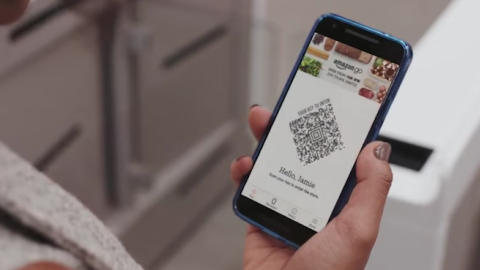Amazon is building stores without cashiers and checkout lines. USA Today reports:
Amazon is testing a grocery store in downtown Seattle that lets customers walk in, grab food from the shelves and walk out again, without ever having to stand in a checkout line.
Customers tap their cellphones on a turnstile as they walk into the store, which logs them into the store's network and connects to their Amazon account through an app.
The service is called Amazon Go. It uses machine learning, sensors and artificial intelligence to track items customers pick up. These are then added to the virtual cart on their app. If they pick up an item they later decide they don't want, putting it back on the shelf removes it from their cart.
Across the internet, pundits are wringing their hands about what this means for the supply of low-skill jobs. And they're right to be worried. Amazon already uses robots for inventory management in its warehouses. Soon, both behind-the-scenes and customer-facing retail operations will be automated.
"Machine learning" and "sensors" make it sound like Amazon has invented some advanced proprietary software, but the equipment appears to be pretty straightforward. RFID tags (the chips in the fare collection cards used by many mass transit systems) will be attached to all merchandise. When you leave the store, you'll walk through a turnstile that scans everything, adds it to your online Amazon cart, and automatically charges your credit card. NFC technology in your phone (this is what Apple Pay uses) will let the store's computer know when you enter and exit. The system isn't that complicated, is sure to be commoditized over time, and will be available to any retailer that wants it.
This story nicely encapsulates the futility of many policies aimed at protecting workers. Trump may persuade more companies to keep their factories and warehouses in America, but it will be much harder to stop them from replacing human beings who operate those plants with robots. Blue states will keep raising minimum wages; that might give a boost to some workers in the short-term, but it won't stop the elimination of many entry-level jobs. In Seattle, where Amazon is building its first cashier-less store, raising the minimum wage just $1.53 to $11 has already decreased the share of workers with jobs by 1.2 percent. By the time Seattle hits $15 in 2021, many more job positions will have been priced out. Raising minimum wages accelerates the elimination of low-wage work through automation and raises the barrier to entry for new companies that don't have advanced capabilities.
Policymakers and pundits can bemoan technological advances all they want, but they can't stop them. Computers are cheaper than humans, and they're often faster too. Rather than trying to fight the tide, we should be thinking about how government can help people learn how to swim with it.
















